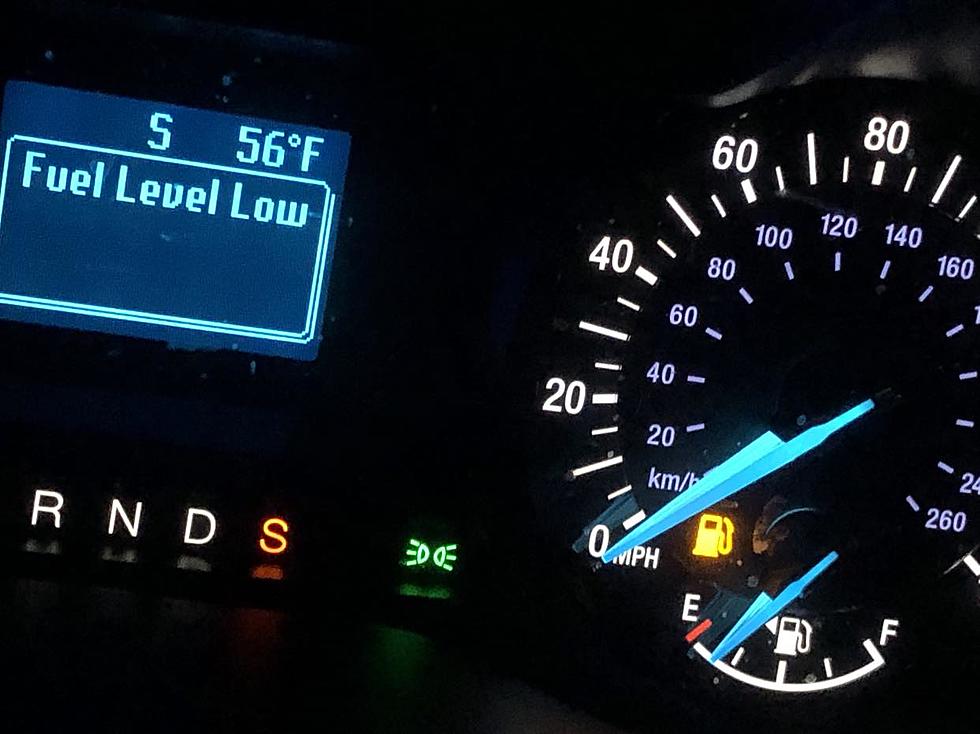
Kentuckians, You Should Never Let Your Gas Gauge Fall Below This!
How many times during your driving career have you seen that warning light come on? You know? The one that lets you know that your gas tank is just about empty! I have been there and done that too many times to count. Last week, I was basically coasting around the city of Owensboro on fumes.
Yeah, that was my car- Fred the Fusion- last week. I got us all the way down to "21 mi to E" before I pulled him into the Kroger Fuel Center to gas him up. As it turned out, I wasn't the only negligent vehicle owner at my office.
My morning radio show co-host, Mary-Katherine Maddox, was rowing the exact same boat. At the same time Fred the Fusion had 21 miles to empty, MKat's 'party barge' had even less miles in her tank.
Yep! You're reading that correctly. Mary-Katherine only had 12 miles left before we was going to be stranded. Luckily, that Kroger Fuel Center I mentioned is less than a mile from the radio station and she was able to get there and fill 'er up before she had to Yabba Dabba Do! it around town in her van.
So, just how low can you let your gas tank get? What do the experts say? Recently, I revved up the online search engine and found out something that I didn't know.
It seems most professionals- with a working knowledge of gas-powered engines- say that you should NEVER let your gas tank dip down below 1/4 of a tank. According to YourMechanic.com,
In older vehicles, manufactured before the 1990s, fuel tanks were made primarily of metal and tended to rust over time. This could cause a problem if the fuel pump sucked up any sediment within the fuel tank and sent it to the engine.
However, in newer vehicles this doesn't appear to be an issue because "newer fuel tanks are made of high-density plastic, negating the formation of rust."
Progressive has chimed in as well on their Life Lanes site. The insurance broker says, "The primary reason you shouldn’t run your car low on gas is that it can cause different engine parts to overheat. Running out of fuel negatively affects several important components, such as the fuel pump, engine, and catalytic converter."
YourMechanic.com discusses those same fuel pump issues at length as well and warns that low tank levels could also lead to fuel filter issues as well. Who knew?? I sure didn't and I have apparently been tempting fate . . . a lot.
Clearly, Mary-Katherine and I were not being responsible vehicle owners last week. I had 21 miles to empty. She only had 12. The good news is we both made it to the gas station before we ran completely out and had to phone-a-friend to come get us. However, there's a chance we may have hurt Fred the Fusion and the Party Barge in the process.
LOOK: See how much gasoline cost the year you started driving
Gallery Credit: Sophia Crisafulli
